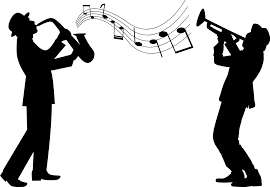Evolution of The Jazz Styles

Over time, the jazz styles have changed and developed into a distinctively American art form. African American neighborhoods in New Orleans are where it began in the early 20th century, and it has since spread throughout the world. This essay examines the development of jazz styles, including notable innovations, accomplishments, the chronology of events, impacts, influences, and artist backgrounds.
The Early Years: New Orleans and the Birth of The Jazz Styles
The city of New Orleans played a pivotal role in the development of jazz. The melting pot of cultures and musical traditions in New Orleans, including African, Caribbean, and European influences, created a fertile ground for the birth of this new art form. African American musicians, such as Buddy Bolden and Jelly Roll Morton, played a crucial role in shaping early jazz. The syncopated rhythms, improvisation, and call-and-response elements found in African music were blended with European harmonies and instrumentation to create a unique sound.
The Swing Era: Big Bands and Popularization The Jazz Styles
In the 1930s and 1940s, jazz entered the Swing Era, characterized by big bands and danceable rhythms. Artists like Duke Ellington, Count Basie, and Benny Goodman led large ensembles that featured intricate arrangements and showcased the talents of individual musicians through solos. The swing era saw jazz move from the confines of African American communities to a broader audience, becoming popular music of the time.
Bebop and the Birth of Modern The Jazz Styles
In the 1940s, a new style of jazz called bebop emerged as a reaction to the commercialization of swing. Musicians such as Charlie Parker, Dizzy Gillespie, and Thelonious Monk sought to create a more complex and intellectually stimulating form of jazz. Bebop emphasized fast tempos, intricate melodies, and advanced harmonies, requiring musicians to possess great technical skills and improvisational prowess. This style marked a significant shift in jazz, moving away from danceable tunes and appealing to a more niche audience.
Cool Jazz and West Coast Jazz The Jazz Styles
In the 1950s, cool jazz and West Coast jazz gained popularity as a reaction to the intensity of bebop. Artists such as Miles Davis, Gerry Mulligan, and Chet Baker explored a more relaxed and laid-back approach to jazz. Cool jazz featured slower tempos, softer dynamics, and a focus on melodic improvisation. West Coast jazz, mainly associated with the California scene, incorporated elements of classical music and a more polished, refined sound.
Hard Bop and the Avant-Garde Movement The Jazz Styles
During the late 1950s and early 1960s, hard bop emerged as a reaction to the cool jazz movement. Hard bop, exemplified by musicians like Art Blakey, Horace Silver, and Cannonball Adderley, combined elements of bebop, blues, and R&B. It emphasized soulful and bluesy playing, intricate rhythms, and a greater focus on collective improvisation. Concurrently, the avant-garde movement, led by artists like John Coltrane and Ornette Coleman, pushed the boundaries of jazz even further, exploring free-form improvisation and unconventional structures.
Fusion and Contemporary Jazz Styles
In the late 1960s and 1970s, jazz fused with various other genres, giving rise to fusion jazz. Artists like Miles Davis, Weather Report, and Herbie Hancock incorporated elements of rock, funk, and electronic music into their compositions. Fusion jazz appealed to a younger, broader audience and brought jazz back into the mainstream. Contemporary jazz continues to evolve today, incorporating influences from world music, hip-hop, and electronic genres, reflecting the diverse musical landscape of the 21st century.
In conclusion, Jazz has evolved, demonstrating the genre’s versatility and originality. Jazz has undergone tremendous changes from its New Orleans origins to its current status as a worldwide phenomenon. Jazz has evolved through the years, and each era and style has contributed new ideas, marked significant aesthetic advances, and had a significant influence on the evolution of music. The history of jazz continues to inspire performers and enthrall audiences around, and its influences may be heard in a variety of musical genres.
References:
Gioia, T. (2019). Music. Basic Books.
Hunter, A. (2019). Explainer: the history of jazz. [online] The Conversation. Available at: https://theconversation.com/explainer-the-history-of-jazz-51729.
Walter Dean Myers (2020). Monster. Thorndike Striving Reader.





